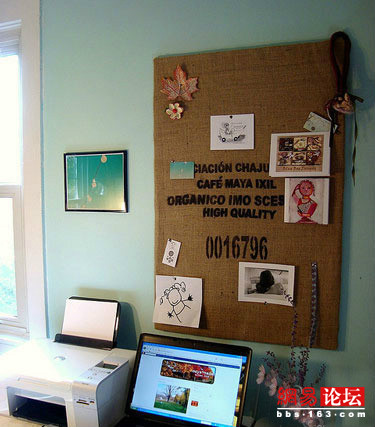Design and Coffee: product Design I learned from selling Coffee
Designers are problem solvers. They often ask themselves, "how can we make users achieve their goals easily and happily?" They create a prototype in front of the user and constantly improve their design until the product meets the needs of the user.
Designers are often hired to design an App or website that users can easily use. But they think the job may be more suitable for others because it hinders innovation. This temperament enables designers to devote themselves to creation more effectively and become a real innovator.
The same approach, technology and value allow designers to craft more practical and interesting user experiences-- we can call it "design ideas"-- are also characteristics of innovators and entrepreneurs. In order to make the designer an innovative innovator, we need to think more deeply.
Here's what I've learned over the past four months as a designer at Cremo.co, a company that sells coffee online. I've noticed four important aspects of design, which are also necessary for successful innovation: identifying problems, developing solutions, talking to customers, and iterating.

Identify the problem
I like coffee. I like to cook fresh coffee beans and taste the coffee made from the coffee beans roasted a few days ago. I enjoy this unique coffee. It feels like the smell of the soil after the rain.
But I don't like to buy coffee, and every time I see the coffee on the grocery store shelf, I am very disappointed: all kinds of mixed roasting methods, various brands that have never been heard of.

Coupled with my love of coffee, I think I should do something to improve the situation. Designers should think deeply and come up with some valuable solutions.
Designers should think deeply and come up with some valuable solutions.
Designers can often find pain points quickly. By expanding our thinking, from the narrow context of App to a broader whole day, designers can identify the requirements of innovation, which is to find a valuable problem that urgently needs to be solved.
It's important to resonate, and identifying your pain points may have a stronger motivation to find a solution. "the simplest and most direct way is to create a great product or service." Jason Fried and David Hansson say, "to create the product you want to use will let you know in your heart whether the product you create is valuable or not."
Develop a solution
One morning a few years ago, I was sitting in Flat White, a cafe in Berwick street, London. I looked up at the blackboard behind the counter with a description of the coffee recommended this week, a coffee from El Salvador that grows in the mountains 2100 meters above sea level and is a bourbon variety. Harvested in May this year, it is dried with aromas of citrus and plums, reminiscent of cherry-flavored cola and cream.
It was a moment of inspiration. At that moment, I thought it would be great if there was an online website where I could explore different coffees from all over the world according to their own characteristics, and buy small coffee makers from the website.

By changing the area of focus, designers can find solutions that change the industry as a whole.
Designers are racking their brains to come up with better ways to solve the problems they face. Once our focus shifts from isolated areas to medium-and large-scale ecosystems, we begin to identify systemic problems, that is, we are moving towards solutions that have the potential to change our entire industry.
And coming up with a solution is just the beginning. The initial solution must undergo transformation and development. Eric Ries wrote in The Lean Startup: "the goal of a startup is to find the right thing to do as quickly as possible. Simply put, it is the product that the customer wants and is willing to pay for. "
Talk to customers
Once I lock in a solution pain point and idea.
How do you buy coffee every day?
What kind of coffee do you like?
How much coffee do you drink a month?
How much do you usually spend on a bag of coffee?
Have you ever bought coffee online?
By reflecting on my experience, I can pinpoint the problem more accurately. Everyone I talk to can give me a new reference point. Every discussion can find out whether others have experienced the same pain as I have. And whether my solution resonates with them.

User research is the core of design. Designers are keen to conduct interviews with users, carefully observe how users interact with the test products, and collect behavioral data of user actions. To be a successful innovator, designers must conduct user research as soon as possible in the process, even before establishing a prototype of the product.
Steve Blank points out in his book The Four Steps to the Epiphany, "A startup should focus on how to gain an in-depth understanding of users and the problems they say they face, their pain, and the work they need to do."
Iteration, iteration
When I talk to people about Crema.co and my original solution, I learn more from it. As an online coffee subscription service store similar to Netflix, which step should you start with? Add multiple "brew list" to the customer and set a delivery frequency (monthly, weekly, etc.). Then automatically accept the next brew list at each shipment.

In fact, every event over the past four months has followed an iterative pattern of designing business models and building product models to develop our Kickstarter campaign.
Identify problems, develop solutions, collect feedback, iterate. If you think this sounds like a user-centric design process, congratulations, you're right. Quite simply, innovative design thinking is obvious: identify problems, develop solutions, collect feedback, and iterate.
IDEO's Tim Brown is an innovative design champion, he describes design ideas in this way, "people-oriented innovation is to achieve the integration of the designer's tools, user needs, technical possibilities, and business success requirements."
Designers are a group of emotional, problem-solving and innovative animals. However, designers should jump out of the computer and mobile phone screens to look at the trees in the forest.
Let's use the design idea to look at the problem. In the process, we may change the world.
Original: Tyler Tate
User consultation body-BESD Design Lab Andy Leong
Important Notice :
前街咖啡 FrontStreet Coffee has moved to new addredd:
FrontStreet Coffee Address: 315,Donghua East Road,GuangZhou
Tel:020 38364473
- Prev

Use a 10-yuan coffee bag to give your home a lift.
The coffee bag is definitely a sharp weapon to raise the pressure grid. The cafe must have this. It's free. It's free. Some treasures are available for sale, only a few yuan each. Many low-cost cafes are decorated like this, using coffee bags as wallpaper. It is strongly recommended that it is awesome to have a dim light. Don't say much, get on the picture right away. A few yuan coffee bag, as a photo wall or something, can't be more loving! Especially
- Next

In response to Earth Day, Starbucks thanks you with coffee
April and 22nd of 2015 is the 46th Earth Day. From 9 a.m. to 12:00 that day, Starbucks will launch a cup in the Chinese mainland area and thank you for your activities with coffee. Starbucks will reward customers who bring their own cup or mug with a cup of freshly brewed drip coffee in return for their environmental protection actions. This is the second year in a row that Starbucks China has opened in response to Earth Day.
Related
- What is the standard process for the purpose of coffee cup testing? What is the difference between hand-brewed coffee and cup testing?
- How to use hand-brewed coffee paragon small golden balls? How does cold coffee lock in the aroma of coffee?
- Is American coffee black? What is the difference between American coffee and drip coffee?
- Unexpected! Well-known tea beverage brand Lele Tea will withdraw from the Zhengzhou market!
- Starbucks enters the fashion and beauty industry?! Netizen: Give me an ice American eye cream
- Why can American refills for free? The difference between Americano and American drip pot coffee
- Being chased out of the rain in front of Starbucks?! Store: Sheltering from rain under umbrellas poses a safety hazard
- The white moonlight has changed?! Lucky launches "Big Winter Pear American"
- Hand-brewed coffee three-stage method, high-sweet and universal brewing method to share! What does the high sweet water level of hand-brewed coffee mean?
- What is the difference between raw, refined and full espresso coffee? How to extract espresso and taste good?

